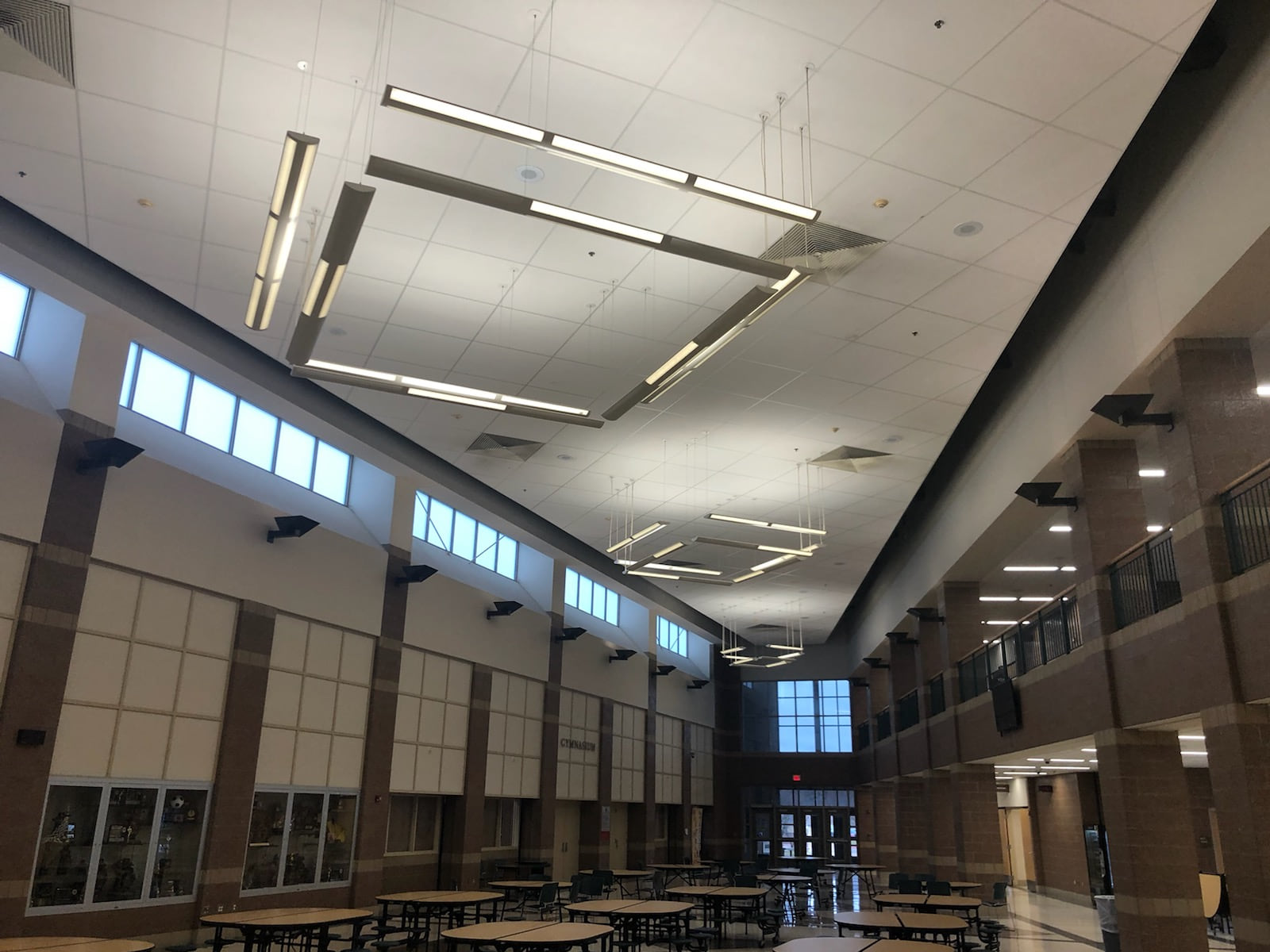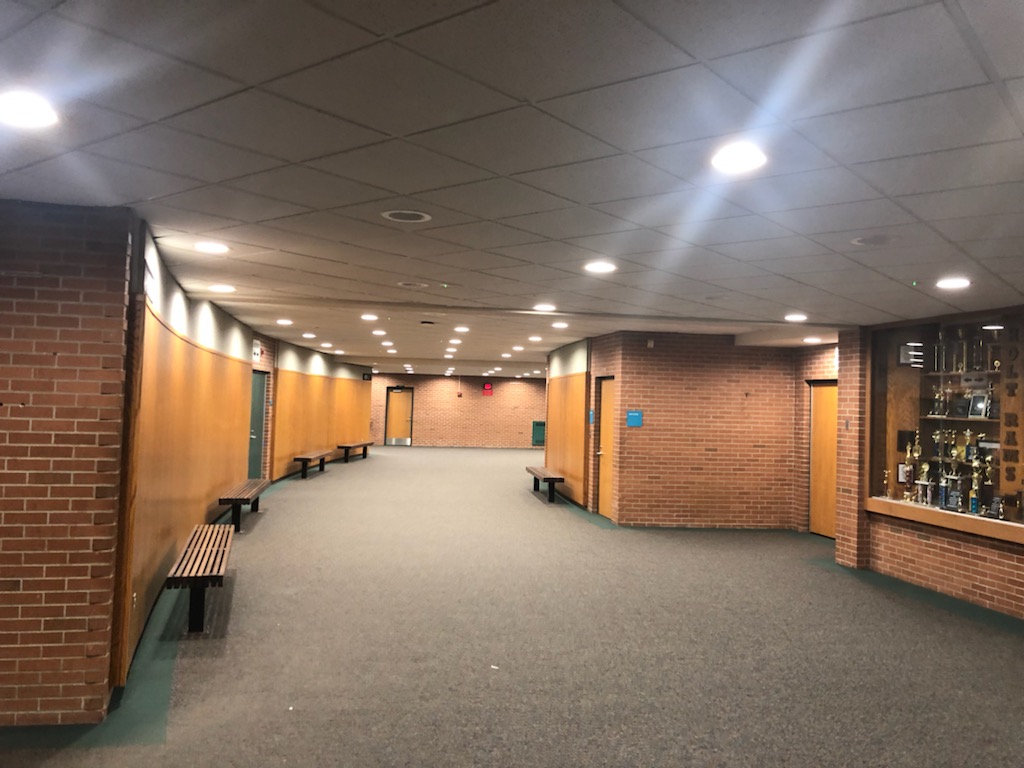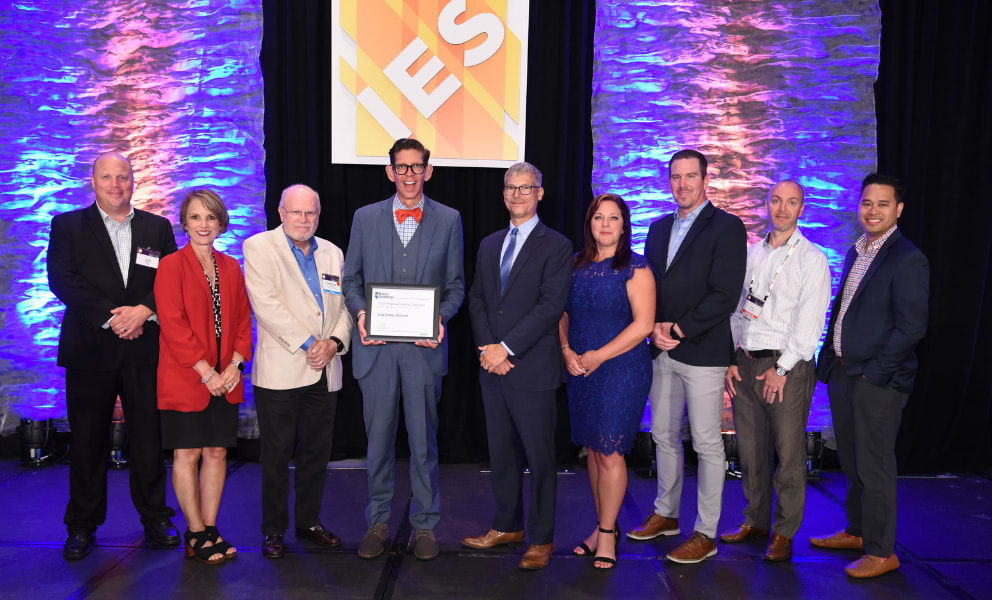Customer Story
Holt Public Schools Upgrades Improve Illumination, Lighten Energy Costs by $3 Million
Location: Michigan
Industry: K-12
Products Used: Lighting, Building Automation,
Topic: Lighting, IEQ, Building Automation Upgrades,
- $3 million expected savings
- 60% expecteed energy use reduction
- 10,000 LED lighting fixtures
- 9 buildings
- 5,000 students
Holt Public Schools Upgrades Improve Illumination, Lighten Energy Costs by $3 Million
CHALLENGE
Holt Public Schools serves nearly 5,000 students in south-central Michigan. The district is led by Superintendent Dr. David Hornak, known for his signature bowties, commitment to quality education and “Hey Holt Public!” community messages. Unfortunately, the district’s academic learning environment didn’t match leaders’ enthusiasm for education.
District buildings needed indoor environmental quality (IEQ) upgrades to help improve illumination, increase comfort, and reduce rising energy costs. Dated lighting – which meant that classrooms were limited to “lights on” or “lights off” – was impeding the educational experience. For example, too-bright lighting was forcing teachers to turn lights off to enable students to read classroom smartboards. Frequent light bulb replacements also were impacting the facilities team’s productivity.
Other challenges included deferred maintenance, failing equipment and outdated building automation system (BAS) capabilities. Unfortunately, the district lacked the funding needed for lighting and other upgrades. Recently approved bond funding would help, but it wasn’t enough to complete the job.
SOLUTION

Drawing on a long-term relationship and a proven track record with Trane, Holt Public Schools Facilities Manager, Rick Brown, reached out for help. He contacted Trane, and in response, Account Managers Dean Weber and Gwen Pettit proposed a budget-neutral solution to first solve the funding issues.
They recommended that Holt Public Schools undertake a guaranteed energy savings performance contract (ESPC) — legislated by the state of Michigan — to provide funding. The combined ESPC and bond funding would cover the improvements. District leaders agreed that this approach made good fiscal sense and obtained ESPC funding.
With financing in place, Trane undertook a comprehensive approach to addressing the district’s needs. “Collaboration is a big part of our project development process,” said Pettit. “We wanted to truly understand their needs, so we first sat down and talked through their requirements for a better teaching and learning environment. Next, we walked each of the buildings with them. Then, we completed an investment-grade energy audit which uncovered a number of inefficiencies that could be addressed.”
Trane proposed a holistic solution to resolving district challenges – and district leaders signed off. The resulting plan covered the district’s junior high, high school, two elementary schools and the early learning center. It included lighting, controls, and water conservation upgrades to cut costs and help improve the learning environment for students, staff and teachers.
District-wide lighting improvements
Subsequent Infrastructure upgrades included the installation of 10,000 LED lighting fixtures — replacing every single fixture in five buildings. An improved building automation system (BAS) that includes occupancy sensors now can be used to control classroom and hallway lighting onsite or remotely. The BAS permits the planning of automatic adjustments that are then implemented when the school is closed without the need to revise regular programming.
District leaders especially appreciate remote management capabilities. “Beyond the valuable improvements to the academic environment, my favorite part of this project is the fact that we can sit anywhere in the world and turn lights on and lights off,” said Hornak.
The new lighting allows both teachers and staff to make illumination adjustments. Classroom lighting can now be dimmed or brightened as needed to meet teaching requirements and preferences. Teachers appreciate the improved and adjustable lighting, High school teacher, Erin Umpstead, says, “My colleagues and I have talked about how we really enjoy being able to have that control over the lighting environment in our classrooms.”
“It’s really nice that you can pick your own lighting setting,” said Brown. “Lighting in some offices like mine is up to 75 percent illuminated, while others dim theirs to 20 percent.” Superintendent Hornak wholeheartedly agrees, “The beauty of the project is the fact that the lighting can be personalized to the particular needs of each teacher for their students, as well as for each staff member or other stakeholder.”
Building Automation System Upgrade and Water Conservation
Improvements to the existing Building Automation System (BAS) have helped ensure optimized operation, minimal downtown, improved occupant comfort, and reduced maintenance costs. New HVAC unit controls are integrated for remote monitoring and building control 24/7. The team also completed water conservation measures in six buildings, replacing existing sinks and toilets with low-flow solutions.
Smooth Upgrade Process
District leaders are pleased with the results. “Our students are thriving in our current environment, and we are very proud of the upgrades we have made,” said Hornak.
Leaders especially appreciated that the work could be completed during the school year rather than waiting until the summer months. “Our Trane partners found a way to have all of our work done after the school day ended and before the school day started,” said Hornak.
Brown appreciated his Trane colleagues’ approach. “My Trane contacts, Gwen and Dean, have been very upfront and very honest, and they have realistic goals. They don't promise everything — they're very realistic about what kind of work we can get done, how long it'll take, and what it will cost. I really, really respect that.”

“We originally selected Trane because it was clear to us that they are the leader in this industry,” added Hornak. “Their representatives took as much time with us as we needed to build our capacity and understanding of the project. We appreciate that they continue to walk beside us every day, moving forward to ensure that we understand our systems, that they continue to function as they or predicted to do so.”
And the energy savings continues to benefit the district. “The money we save in electrical costs comes back to the facilities department and that’s funding that can be used to replace asphalt or update air handlers or for other critical needs,” said Brown.
RESULTS
The upgrades improved IEQ for teachers, students and staff who can now count on consistent building comfort and adjustable lighting. The completed upgrades at Holt Public Schools are expected to save more than $3 million in energy and operational costs over 12 years. The lighting upgrades alone are expected to reduce energy use by more than 60 percent for the district. Savings were increased by a $713,000 check from Consumers Energy, Michigan’s largest energy provider.
The U.S. Dept. of Energy and the Pacific Northwest National Laboratory honored the district for its lighting upgrades. This distinction recognizes advanced use of lighting and controls as part of their new advanced lighting systems that help save energy and create a comfortable environment to live and work in. Thanks to the lighting upgrades and accompanying controls, the resulting network of Bluetooth devices at Holt is considered one of the largest single mesh (wireless) networks in the world without a gateway.
“Our greatest joy in seeing this project come together has been how the improved lighting has uplifted the school and how having a better overall learning environment for the kids and teachers has positively impacted the district,” said Pettit.
-
 Trane Helps District Undertake Nationally Recognized Energy Saving Lighting Upgrades
Trane Helps District Undertake Nationally Recognized Energy Saving Lighting UpgradesA lighting upgrade recognized by the U.S. Dept. of Energy (DOE) is expected to reduce energy use by more than 60 percent for the Holt Public School district, which serves more than 5,000 students in nine buildings in central Michigan. The upgrades have helped to make the learning environment more comfortable: previously, overbright lighting had driven some teachers to turning classroom lights off entirely.



































































































